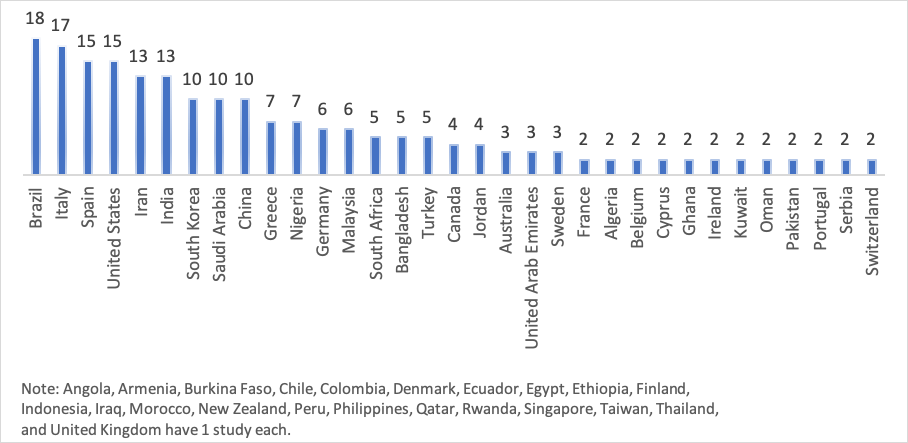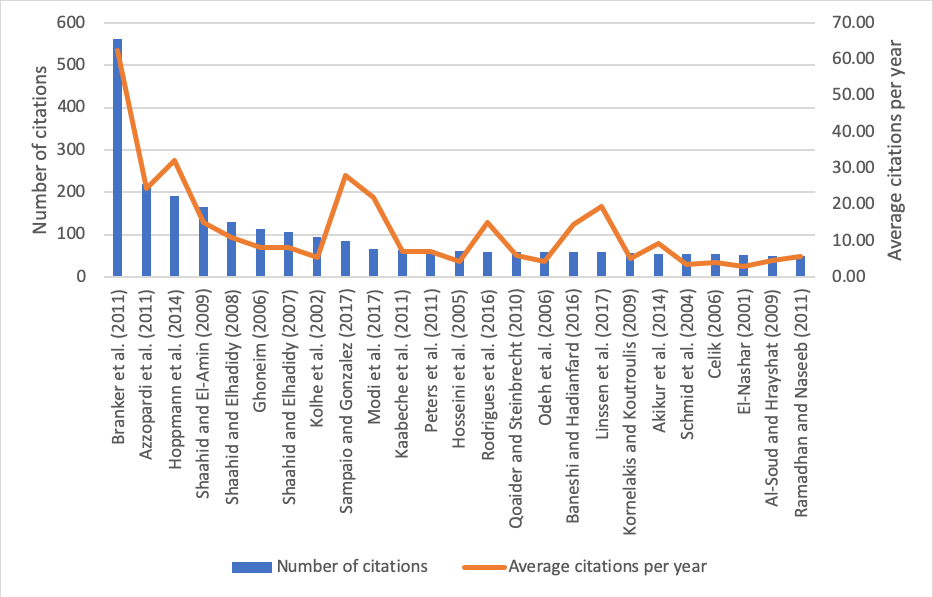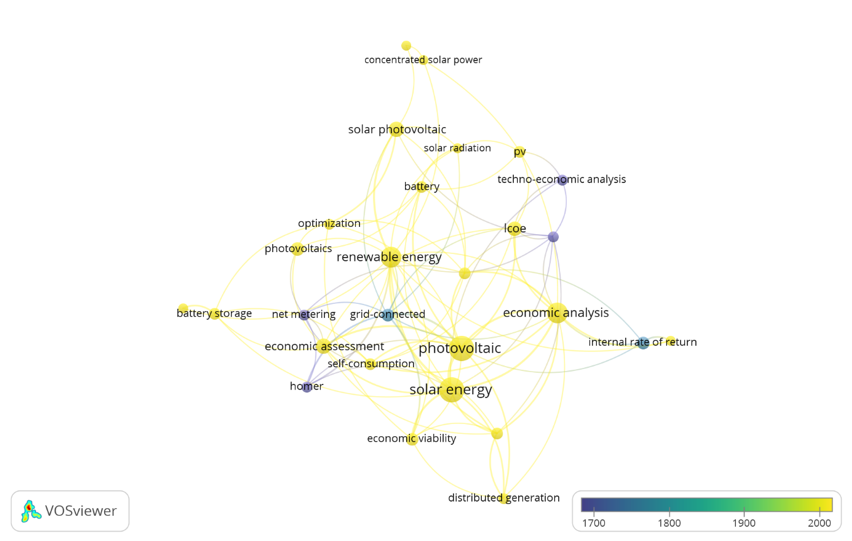The introduction of environmental impact targets around the world has highlighted the need to adopt alternative sources of energy, which can supply the demand and mitigate the damage caused to the environment. Solar energy is one of the main sources of alternative energy, and it is considered an abundant source of clean energy. However, to facilitate and encourage investors interested in the installation of photovoltaic energy systems for electricity production, it is essential to evaluate the factors that impact the economic viability of the projects.
- Solar energy
- Photovoltaic
- Economic viability
- Economic feasibility
- Risk factors.
1. Introduction
Renewable energy sources (RES) are viable alternatives to supply energy demand, reduce energy costs and mitigate environmental impacts. Within these sources, photovoltaic (PV) energy stands out converting sunlight into electrical energy. The Sun is the main source of energy on our planet, but today a minor portion of that energy is harnessed, and the potential for further developments is huge.
A broader view of the economic feasibility of PV energy investments needs to identify the risk factors that can make investments in PV energy financially unviable. Several factors have been pointed out around the world and vary among different studies.
2. Impact Factors Identified
This study performed a systematic literature review (SLR)[1]. Thus, 225 manuscripts dealing with economic feasibility analysis were identified.
From the 2000s onwards, a greater number of publications in the area have been identified, reaching its peak in 2017 with 47 published works. Figure 1 illustrates the evolution in the number of publications per year of the studies found in the sample. These results confirm that the interest in the research on the economic feasibility of solar/photovoltaic energy in the world has grown especially in the last 10 years.

Figure 1.
Evolution of the number of publications per year in the final sample.
It is easy to see how much the place of study influences the analysis of economic feasibility of this type of project. In fact, when analyzing these studies, it is possible to identify similarities of the analysis between manuscripts from the same region. Observing the number of countries found in the sample of studies, it is clear that the interest in the study on the feasibility of solar energy projects is a trend in many regions of the world, as shown in Figure 2.
Figure 2.
Number of publications by country.
The number of citations usually shows the effectiveness, novelty, and quality of the article. Figure 3 shows the articles most cited in the sample. Considering the overall number of citations (562) and the average number of citations per year (62.4), Branker et al.[2] is the study with the greatest impact in our sample. Other references of great impact of the sample, with more than 100 total citations, are Azzopardi et al.[3], Hoppmann et al.[4], Shaahid and El-Amin[5], Shaahid and Elhadidy[6], Ghoneim[7], and Shaahid and Elhadidy[8].
Figure 3. Number and average of citations of the most cited articles in the sample. Source: Azevêdo et al. [9].
Using the VOSviewer software as a tool, a network analysis of the sample data was performed to observe the use of the main keywords in the final sample of research papers. Figure 4 shows that the word “photovoltaic” is the most used by the authors, which appeared in 31 sample publications. The term “solar energy”, which is often used in conjunction with the term “photovoltaic”, is also widely used by researchers, with a number of 30 appearances in the sample. The terms “renewable energy” and “economic analysis” appear next, mentioned in 21 publications each. It is also possible to notice, thanks to the overlay visualization mode, that terms such as “net metering”, “techno-economic analysis”, and “homer”, for example, are being discontinued in these works. Conversely, new words are emerging and being used as keywords in the search for articles and reviews, such as “economic assessment”, “levelized cost of energy (LCOE)” and “self-consumption”, for example.
Figure 4. Map of bibliographic data of the main keywords of the sample, in overlay mode.
Among all the factors found, the investment cost was identified as the most prominent, present in 219 of the 225 works in the final sample. The following most recurrent factors in the studies analyzed are power generation, operation and maintenance cost, solar radiation, and useful lifetime. Figure 5 presents all the impact parameters identified in the sample, in the descending order of occurrence.
Figure 5.
Parameters of impact on photovoltaic (PV) energy investment.
According to the factors identified, the parameters of this work were classified into five categories[10], based on the point of view in which they fit:
(i) location factors: Azimuth and incidence angle, Location of PV panels, Shading;
(ii) economic factors: Electricity consumption, Investment cost, Operations and maintenance costs, Extra investment costs, Residual value, Avoided energy cost, Costs of land;
(iii) political factors: Energy tariff, Financing conditions, Discount rate, Sale of energy, Incentive policies, Interest and taxes, Inflation rate;
(iv) climatic and environmental factors: Solar radiation, Temperature, Energy penetration rate, Soiling;
(v) technical factors: Frequency levels, Energy storage, Efficiency, Power generation, Operation and maintenance time, Lifetime, Panels degradation, Tilt angle.
For further discussions on each of the studied factors, access Azevêdo et al. [9]
3. Conclusion
Analyzing the main characteristics of a sample of studies selected with the systematic literature review criteria, it has been possible to notice the growing interest in this area of research, through the rapidly increasing number of articles per year of publication. In addition to the relevance of these studies to the literature, through the general number of citations it has been possible to observe that, from 2015 to 2019, there was an increase of approximately 54% in the number of citations.
In our study, 29 factors were identified, which impact in some way on the economic feasibility of PV energy projects. Among the factors identified, the initial investment cost has been the most prominent, followed by power generation and operation and maintenance costs. Moreover, important terms are solar radiation, lifetime, energy tariff, efficiency, electricity consumption, and interest and taxes.
Finally, some factors vary widely from region to region, such as solar radiation, energy tariffs, temperature, and incentive policies, among others. Each factor ends up being influenced by another one, which reinforces the need to analyze all possible parameters for each case study. When compared to the places of publication, it can also be noted the diversity of the studies, as the factors considered in each study often vary greatly according to the region.
References
- Yair Levy; Timothy J. Ellis; A Systems Approach to Conduct an Effective Literature Review in Support of Information Systems Research. Informing Science: The International Journal of an Emerging Transdiscipline 2005, 9, 181-212, 10.28945/479.
- K. Branker; M.J.M. Pathak; Joshua M. Pearce; A review of solar photovoltaic levelized cost of electricity. Renewable and Sustainable Energy Reviews 2011, 15, 4470-4482, 10.1016/j.rser.2011.07.104.
- Brian Azzopardi; Christopher J.M. Emmott; Antonio Urbina; Frederik C. Krebs; Joseph Mutale; Jenny Nelson; Economic assessment of solar electricity production from organic-based photovoltaic modules in a domestic environment. Energy & Environmental Science 2011, 4, 3741-3753, 10.1039/c1ee01766g.
- Joern Hoppmann; Jonas Volland; Tobias S. Schmidt; Volker H. Hoffmann; The economic viability of battery storage for residential solar photovoltaic systems – A review and a simulation model. Renewable and Sustainable Energy Reviews 2014, 39, 1101-1118, 10.1016/j.rser.2014.07.068.
- S. M. Shaahid; I. El-Amin; Techno-economic evaluation of off-grid hybrid photovoltaic–diesel–battery power systems for rural electrification in Saudi Arabia—A way forward for sustainable development. Renewable and Sustainable Energy Reviews 2009, 13, 625-633, 10.1016/j.rser.2007.11.017.
- S. M. Shaahid; M.A. Elhadidy; Economic analysis of hybrid photovoltaic–diesel–battery power systems for residential loads in hot regions—A step to clean future. Renewable and Sustainable Energy Reviews 2008, 12, 488-503, 10.1016/j.rser.2006.07.013.
- Adel A. Ghoneim; Design optimization of photovoltaic powered water pumping systems. Energy Conversion and Management 2006, 47, 1449-1463, 10.1016/j.enconman.2005.08.015.
- S. M. Shaahid; M.A. Elhadidy; Technical and economic assessment of grid-independent hybrid photovoltaic–diesel–battery power systems for commercial loads in desert environments. Renewable and Sustainable Energy Reviews 2007, 11, 1794-1810, 10.1016/j.rser.2006.03.001.
- Rômulo De Oliveira Azevêdo; Paulo Rotela Junior; Luiz Célio Souza Rocha; Gianfranco Chicco; Giancarlo Aquila; Rogério Santana Peruchi; Identification and Analysis of Impact Factors on the Economic Feasibility of Photovoltaic Energy Investments. Sustainability 2020, 12, 7173, 10.3390/su12177173.
- Graciele Rediske; Julio Cezar Mairesse Siluk; Natália Gastaldo; Paula Donaduzzi Rigo; Carmen Brum Rosa; Determinant factors in site selection for photovoltaic projects: A systematic review. International Journal of Energy Research 2018, 43, 1689-1701, 10.1002/er.4321.
- Ana Paula Farias-Rocha; Karim M. Kamel Hassan; Jesselyn Rochelle Rodriguez Malimata; Griselda Adilene Sánchez-Cubedo; Luis Rojas-Solórzano; Solar photovoltaic policy review and economic analysis for on-grid residential installations in the Philippines. Journal of Cleaner Production 2019, 223, 45-56, 10.1016/j.jclepro.2019.03.085.




